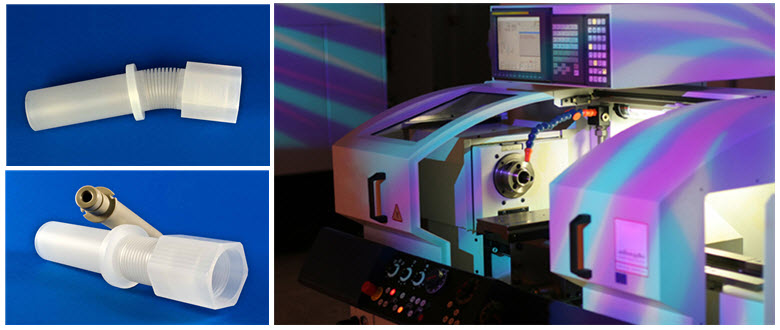CNC Milling vs CNC Turning: Know the Difference
CNC turning and CNC milling is two common CNC machining processes. Although they differ in application, often they are misunderstood to be the same. Both these techniques have been used widely for material production for several years now, still, they continue to evoke confusions within newbies and people who have no technical background. Would you be intrigued to know how do they differ or which one is better than the other? If yes, this post introduces you to CNC turning and CNC milling individually and then discusses the differences between the both.
CNC Turning
CNC turning works almost similar to the traditional lathe turning. The only difference is that the CNC turning process is performed inside a CNC machine and is controlled by a set CNC program. In this process, the workpiece is mounted inside a chuck and spindle assembly and the single-point cutting tool is mounted on the tool holder. The spindle rotates at a specific RPM so does the workpiece. The tool is given forward and reversed motion at a specific feed rate while the cutting tip touches the surface of the workpiece. This way, the material from the workpiece surface is removed as a result of rotary and transverse motion.

CNC Milling
CNC milling is a rotary cutting process, in which, the tool motion is rotary. While the tool rotates, the tool holder may have vertical or horizontal motion. Therefore, the milling process is referred to as a 3-directional machining process. In CNC milling the workpiece may remain stationary or mobile while the cutting tool rotates and goes under x-y-z axial movement.

Now that both CNC turning and CNC milling are discussed individually, let us differentiate both the processes by considering multiple factors.
CNC turning vs CNC Milling
The factors that make CNC turning and CNC milling different from each other are listed below.
- Tools: The CNC turning process uses a single-point cutting tool. The single-point cutting tool is inclined at a specific angle to form features like tapers. On the other hand, the CNC machining process uses a milling cutter. The milling cutter is a multi-point cutting tool.
- Workpieces: In CNC turning, the tools are often cylindrical, whereas, in milling, the workpieces are often pre-shaped flat-surfaced objects.
- Cutting Action: In CNC turning, the cutting action takes place due to rotary and transverse motion of the tool and workpiece. On the other hand, in milling, the cutting takes place due to the rotary action of the tool and resistive friction offered by the workpiece surface. In CNC turning, the cutting action is continuous at a constant pre-set feed rate. However, in the CNC milling, cutting action can be continuous or periodic as the tool may detach from the workpiece after time intervals, based on the type of features to be formed.
- Final Results/Part Features: CNC turning produces cylindrical or conical objects as final products. However, milling gives flattened or sculpted objects as the final products.
- Type of Scrap: In CNC turning, the cutting waste or scrap is continuous or discontinuous chips and fragmented scraps. In milling, discontinuous chips are formed as scrap.
No matter which process is suitable for your production requirements, you must focus on the quality of CNC turning or milling. These CNC turning and/or CNC milling services must be sourced from the experts like Brogan-Patrick, in order to ensure product quality and precision. The company provides CNC plastic and metal machining services in Illinois and Wisconsin and has been serving clients from electronics and engineering, food and manufacturing, medical and healthcare, oil and gas industry.
